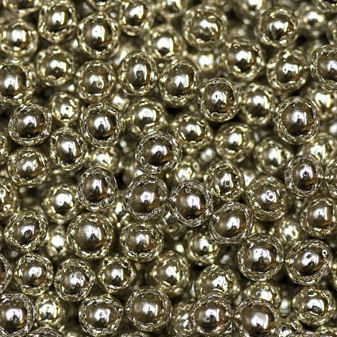
Yesterday I supervised a field trip day to a local nature trail with my daughter's class. What a stressful six hours that was! Might have something to do with my assigned charge "Jeffrey" running off unexpectedly at every step along the way. We travelled by foot, train, boat, and bus for transit time of 2.5 hours. EACH WAY. On the way back, my daughter purchased silver Cola Balls from a candy shop at Lonsdale Quay.
With my (not) vast knowledge of metals, I wondered what coloured the balls silver? Silver? Aluminum? No matter the alternative, all seemed kind of... scary, and none qualified as what I thought of as food.
My friend Google advised me that nobody ever asked this all important life altering question, soon to be the subject of the Obsessive Researching Mommy's attention. British sweet shop Baa Humbugs had an ingredient list for Silver Cola Balls: Sugar, Modified Maize Starch, Gelatine (Bovine), Stearic Acid, Maltodextrin, Flavourings, Colour, E173.
So what is E173?
E numbers are codes for chemicals which be used as food additives in the European Union, according to Wikipedia. So... E174 is Silver. But E173 is... wait for it... aluminum. A check of a Canadian candy, the "Cola Silver Ball" made in Burnaby by Pauline Johnson is made of:
SUGAR, FLAVOUR, COLOR E 173, GELATINE, GLAZING AGENT
CARNAUBA WAX, WHEAT STARCH, GLUCOSE SYRUP
There it is again, that silly E173!
We should really name them, "Aluminum Cola Balls." Doesn't have the same tasty ring, though, I admit.
Somewhere in the depths of my brain, I remember a link between aluminum and Alzheimer's, enough to warrant a frantic phone call to my parents to tell them to STOP using their aluminum cookware. Wikipedia further assures me that my worries are without merit:
"According to the Alzheimer's Society, the medical and scientific opinion is that studies have not convincingly demonstrated a causal relationship between aluminium and Alzheimer's disease. Nevertheless, some studies, such as those on the PAQUID cohort, cite aluminium exposure as a risk factor for Alzheimer's disease. Some brain plaques have been found to contain increased levels of the metal.[83] Research in this area has been inconclusive; aluminium accumulation may be a consequence of the disease rather than a causal agent. In any event, if there is any toxicity of aluminium, it must be via a very specific mechanism, since total human exposure to the element in the form of naturally occurring clay in soil and dust is enormously large over a lifetime.[84][85] Scientific consensus does not yet exist about whether aluminium exposure could directly increase the risk of Alzheimer's disease.[81]"
Aluminum toxicity can be caused when you eat foods containing a high level of aluminum. Now, as to what amount is "safe?" The FDA has determined that aluminum used as food additives are generally safe.
And now, the ORM can rest to fight another day.
Thanks a ton! Been looking for the answer to this for a while now!
ReplyDeletebut they are still good no matter if you die...
ReplyDelete